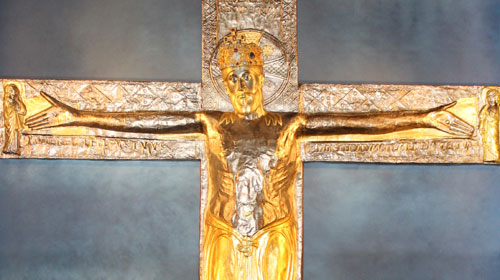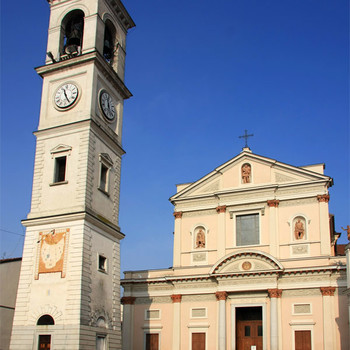Chiesa della Natività di Maria Vergine
Diocesi di Pinerolo ( sec. XII; XV; XVI )
Piccola chiesa con un notevole ciclo di affreschi medievali.
Museo parrocchiale di Campertogno
Diocesi di Novara
Adiacente alla monumentale chiesa di Campertogno è ben distribuito in accoglienti sale espositive dell’edificio parrocchiale il Museo della Parrocchia, realizzato per volontà del compianto parroco don Pier Cesare De Vecchi, illuminata figura di sacerdote.
Chiesa di San Rocco
Diocesi di Novara ( sec. XVI; XVII; XVIII )
Chiesa a tre navate costruita tra il 1560 e il 1580 sul luogo di una preesistente cappella.
Chiesa di San Bartolomeo
Diocesi di Novara ( sec. XV; XVI; XVII )
La parrocchia venne istituita ufficialmente nel 1554 dal Card. Morone, vescovo di Novara, staccandola da Omegna.
Chiesa di San Giovanni Battista
Diocesi di Novara ( sec. XV; XVI; XVII )
La chiesa di San Giovanni Battista è un edificio che presenta caratteristiche tardogotiche e rinascimentali.
Collegiata dei Santi Martino e Stefano
Diocesi di Tortona ( sec. XV; XVII; XX )
L'Insigne Collegiata dei Santi Martino e Stefano si trova a Serravalle Scrivia, edificata in posizione rialzata confronto alla strada che attraversa il paese, a ridosso della roccia che delimita questa zona dell'abitato.
Chiesa di San Michele Arcangelo
Diocesi di Novara ( sec. XVII; XVIII; XIX )
La chiesa di San Michele Arcangelo è la parrocchiale di Cameri, in provincia e diocesi di Novara[1]; fa parte dell'unità pastorale di Galliate.
Ancient Crucifixes

Of course the crucifix theme is recurrent in the history of art and over the centuries. One of the most important crucifixes of Western art of all time is found in Piedmont, kept in Vercelli Cathedral Treasury and dating back to the year 1000.
The wooden cross was commissioned by Bishop Leone and features overlapping embossed silver foil decorated with gold, enamel and precious stones. It is an expression of Ottonian art, which is better known for its illuminated manuscripts. The size (327 x 236 cm) and artistic quality of the opus make it a true rarity, while it is similar in type to a crucifix found in Casale Cathedral, taken from Alessandria Cathedral in 1403 by the condottiero Facino Cane.












